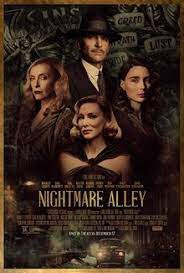This month, Dana King published Leaving the Scene, the sixth book in his terrific Penns River series of police procedurals. I recently asked him three questions: EB: Congratulations on the new book. Would you tell us about it and what the police in your fictional Pennsylvania town are facing?
DK: Leaving the Scene has two meanings in this book. Long-time Penns River police chief Stush Napierkowski has retired, so changes are afoot in the department. The new chief has to hit the ground running when a hit-and-run driver kills a woman. While the homicide takes up more of the story than anything else, mostly the book deals with the conflicting demands on the cops’ time, some humorous, others not.
EB: You’ve lived with your recurring characters for a while now. Does that make the writing easier? Or is coming up with a new story always a challenge?
DK: For me it’s easier; others’ mileage may vary. I like having a set cast I can draw from, as I know many of their strengths and weaknesses already. I’ll often get an idea for a story, or a side anecdote, and my first thought will be, “Sisler needs to answer this call,” or, “this can show the differing styles and personalities of Trettle and Burrows.” It opens things up for me. I also don’t have to use every continuing character in every book. It’s a little like the old Mission Impossible TV show, where Peter Graves would shuffle through the photos of his team to choose who he wanted to use this week. As for ideas, Penns River is based on a real place. I just have to read the paper for ideas.
EB: During the writing of any of your Penns River novels, or your Nick Forte P.I. series, have you ever painted yourself into a corner and had to figure a way out of it?
DK: Oh, yeah. Two times come to mind. In each I had to throw away tens of thousands of words and go back to a place where things were still on the rails and work from there. I once wrote over 30,000 words of a Nick Forte story, fighting it all the way, when I realized this wasn’t a Forte story; it belonged in Penns River. I threw away everything but one sentence and started over. (It wasn’t the opening sentence, either.) Not coincidentally, these are the only books I tried to write without outlines. Never again. The outline often changes as the book progresses, but I always have some kind of map working. Scrivener is great for that, especially if you need to re-arrange the order of chapters.
EB: Thanks, Dana.
For more information about Dana King’s novels, check out his website, and keep up with him on Facebook or his blog.























